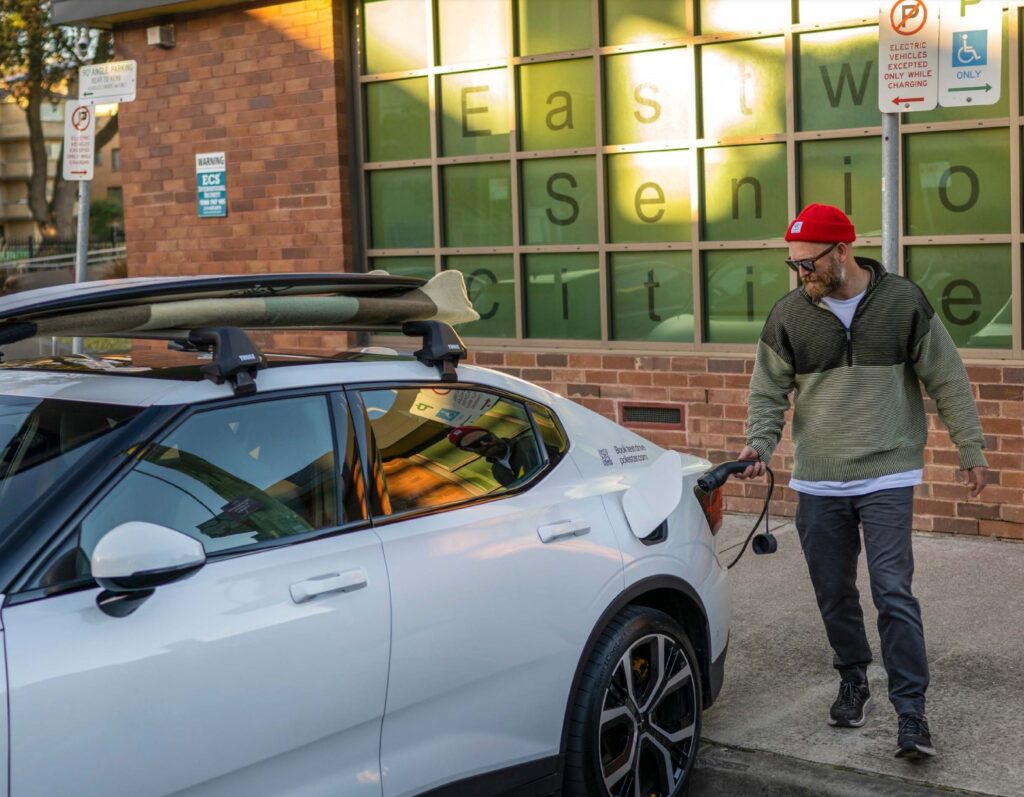Australia has a growing fleet of electric vehicles and in June 2023, they accounted for 8.8% of new vehicles sold. This increase in EVs means the charging infrastructure across Australia needs to come along for the ride.
There’s a lot of focus on the ultra-fast 350kW chargers along freeways, but equally important as the fleet grows are charging opportunities almost everywhere you want to park. NSW estimates that almost one in 3 drivers across NSW do not have access to off-street parking to charge an EV.
The New South Wales Government are offering grants of up to $800,000 per applicant to install electric vehicle kerbside charging. This round of grant applications will total $3 Million and run through till Friday 17th November 2023.
As always, there are some terms and conditions for the funding applicants.
- Funding must be no more than 80% of the total installation and equipment cost for each requested EV charger, capped at $10,000 per charge port.
- Where the asset owner pays third-party EV charger software subscription costs, applications may include up to 80% of the cost of a 3-year EV charger software subscription for each charging site.

Sites should be in locations where nearby houses and apartments have limited access to off-street parking. Sites must also be on streets with a maximum speed limit of 50 km/hr, ensuring these are residential locations.
Another stipulation around the site configuration is interesting, suggesting angled or 90-degree parking is preferred. Given the variety of charge port locations on EVs, this really needs to be carefully considered to ensure the maximum number of EV models can charge at these locations.
Funding is available for both AC and DC charging, with the applicant able to select what they believe is right for the location.
AC charging:
With most charging done overnight in residential areas, slower AC chargers may be more suitable on kerbside locations to accommodate these longer dwell times. AC chargers place less strain on the electrical network and are cheaper to install and operate.
DC charging:
In areas closer to commercial centres or business districts there tends to be a mix of dwell times. Between visitors charging for a couple of hours during the day and residents charging overnight, both AC and DC chargers can be suitable.
Once an application is approved, the provider has a maximum of 12 months to get the charging in place and operational. This is a positive move to ensure the investment delivers the outcomes for our growing fleet of EV owners.


In the NSW Round 1 Guideline document for EV Kerbside charging grants, they provide a budget table as an example of what co-investment may look like.
This includes expected costs for different types of chargers, including ones mounted on an electricity pole, a lighting pole, or a pedestal.
The Total Installation and Equipment cost (TIEC) for installing a charger on an electricity pole ranges from $18,000 to $26,000 in the examples. Those on an electricity pole could cost as much as $25,000 (this is an estimate, not a cap) and those on a Pedestal are listed as $35,000. This indicates the savings on offer if we leverage the existing infrastructure that already has power connections, compared to standing up a new location.
Applications will go through a 5-step process – Eligibility check, Merit assessment, NSW Government approval, Notification of Assessment Outcomes and finally Funding agreement execution.
You can see a map of NSW EV Kerbside Charging Grants here. This grant program is part of the overarching NSW Electric Vehicle Strategy announced in 2021.
For more information, or to apply, head to Energy.nsw.gov.au.
